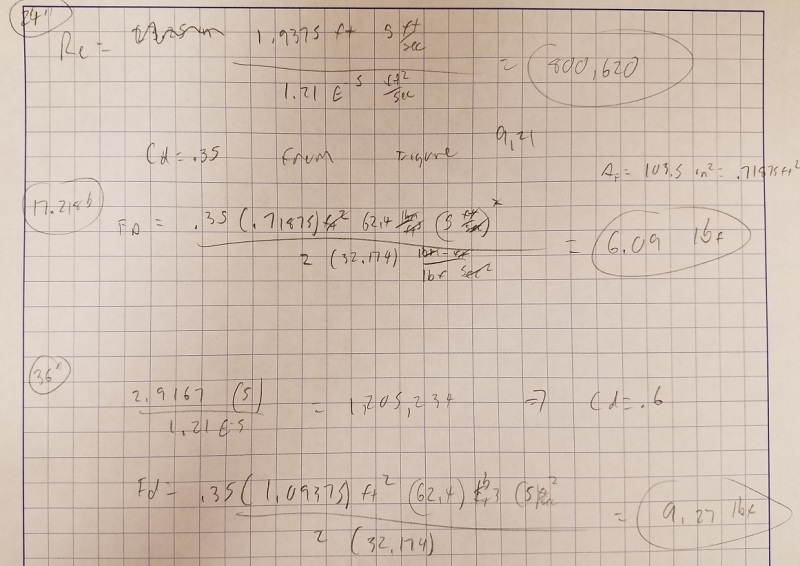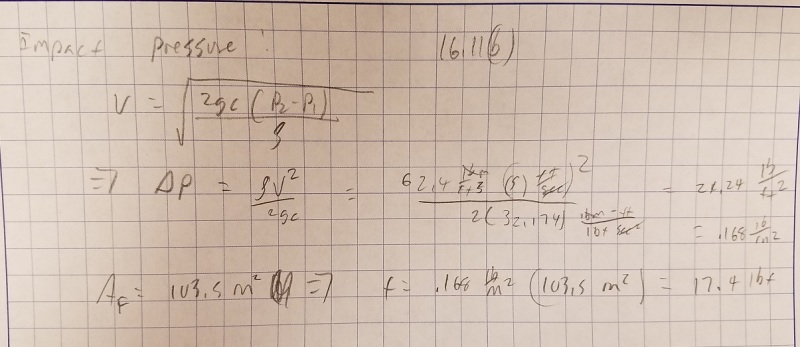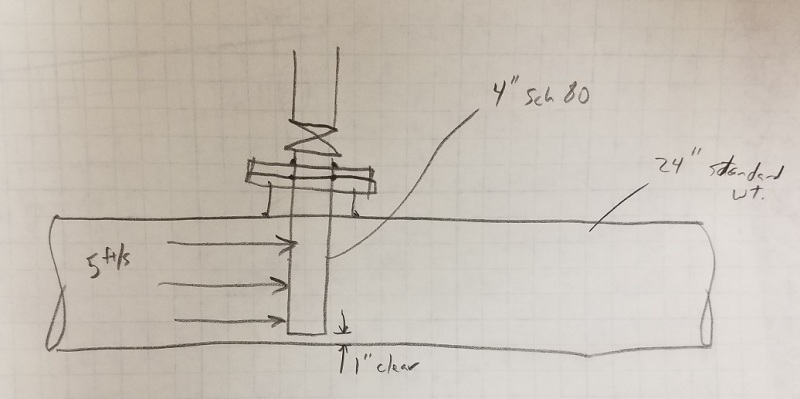MFJewell
Mechanical
- Mar 2, 2017
- 366
I am looking at an application that has a 4" sch 80 pipe mounted perpendicular in the flow stream of a 24" and possibly a 36" pipe. A structural engineering reviewed it and said the force on the pipe is around 20,000 lbs. I found this hard to believe so I looked at it independently. I used drag force and impact (stagnation pressure) and come up with about 23.5 lbs for the 24" application. See diagram and calculation below. Is there something I am missing here?
I believe he is just assuming a huge dP across the pipe and used that dP with the frontal area to get his value.



I believe he is just assuming a huge dP across the pipe and used that dP with the frontal area to get his value.



